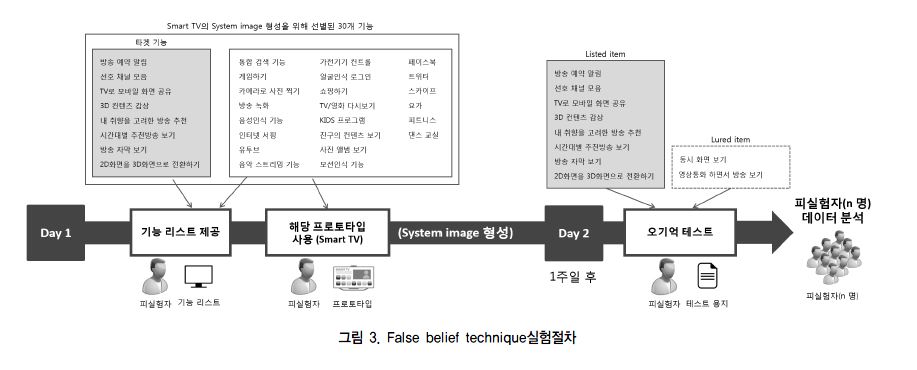I Remember/Know/Guess What I Saw: A False ‘Belief’ Technique to Features Selection
ACM CHI (2014)
Jangsun Lee & Hokyoung Ryu

|
Abstract: This paper reports on the primary decision problem in the smart TV UI design – features selection. The conventional feature selection methods were not able to render what features are to be included in the new TV design, and this position paper introduced the ‘False Belief technique’ to extract a users’ schema of the novel features from smart TVs. We found that this technique could effectively examine the users’ mental model of the smart TV services, in a rather unconscious way at the expense of extra training time. Also, it can quantify utility values of the features so that the designer can prioritize what features should be firstly considered in a novel product development.
|
| The purview of this article is to suggest a practical feature selection technique that the previous methods (i.e., feature checklist, card-sorting, scenario-based approach, and so forth) did not meet. We have been developing the method – ‘false belief technique’, to depict the user’s schema and what features are consistent/inconsistent with their schema with the principle of memory distortion and false memory. This work will support novel UI designers as to what features should be added and further developed in the novel product development. We, of course, acknowledge that this technique is not a final version and needs to be further tuned. A thorough empirical study of whether or not the criteria used in the ‘false belief technique’ formulation is urgently required. Also, we need to check if this method is practical, so we are planning to apply the technique for Samsung™ Smart TV features selection process. |
| Link to read more, http://dl.acm.org/citation.cfm?doid=2559206.2581280 |
|